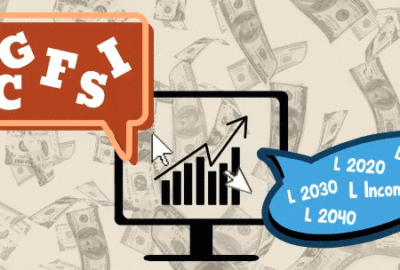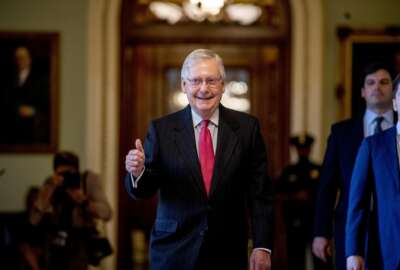
TSP offers more details on CARES Act loan help, and what’s next for the I fund
What a week for the Thrift Savings Plan. The TSP offered more details on how its participants can take loans and withdrawals during the coronavirus pandemic, and...
Participants in the Thrift Savings Plan have been anxious for more details on the new temporary loan and withdrawal options that were part of the Coronavirus Aid, Relief and Economic Security (CARES) Act.
The Federal Retirement Thrift Investment Board, the agency that administers the TSP, offered up some more information.
The law, for example, allows participants to apply for a TSP loan worth up to $100,000 instead of the usual $50,000 maximum. Participants can also withdraw 100% of their available TSP balances, compared to the usual 50%.
Participants will have until some time in September to apply for these loans, but the TSP hasn’t yet announced a specific cutoff deadline, the FRTIB said late last week.
The CARES Act also allows TSP participants to temporarily suspend their obligations to make payments on their loans for 12 months. Taking this option will also extend the term of a participant’s loan by 12 months.
Participants who need a break from their loan payments have until Dec. 31, 2020 to apply for a suspension.
Though the TSP hasn’t given a specific date for when these loan options will be available, participants should have access to them no later than June 22, the FRTIB said.
In addition, the CARES allows participants — including all federal employees who are still in federal service — to withdraw up to $100,000 from their TSP accounts without incurring the typical 10% tax penalty.
New withdrawal options under the CARES Act should be available in mid-July, and participants will have until December to apply for one.
To use any of these new options, participants have to prove they fit in one of the following categories:
- They’ve been diagnosed with the coronavirus by a test approved by the Centers for Disease Control and Prevention;
- Their spouse or dependent has been diagnosed with coronavirus; or
- They’re experiencing adverse financial impacts as a result of being quarantined, furloughed or laid off or have had work hours reduced, being unable to work because of a lack of child care during the pandemic, among other situations.
The FRTIB has previously said these new options may be administratively difficult for it to implement, given the wide variety of requirements participants have to potentially qualify.
But participants still have access to existing withdrawal options, which the FRTIB said may help those who have been financially impacted by the coronavirus pandemic now.
Hardship withdrawals and in-service withdrawals for current federal employees who are at least age 59-and-a-half are both options, the TSP said last week.
For those who have left federal service, participants and their beneficiaries already have access to some installment-based or single-payment withdrawals from the TSP.
TSP participants who meet the same coronavirus-related requirements described above may take a withdrawal, worth up to $100,000 across all of their retirement accounts combined, and qualify for a tax break.
For qualified participants who take a coronavirus-related withdrawal and designate it as such on their 2020 tax return, the IRS will waive the usual 10% early withdrawal tax penalty, the TSP said.
Participants can choose to evenly spread out taxable income from the coronavirus withdrawal over three years, but this is optional. A participant who, for example, takes a coronavirus-related withdrawal worth $9,000 could report $3,000 each on his or her federal tax return as income for 2020, 2021 and 2022, the TSP said.
Qualified participants may repay all or part of the amount of the withdrawal back to an eligible retirement account, as long as it’s repaid within three years of taking the distribution.
“If you repay a coronavirus-related distribution, the distribution will be treated as though it were repaid in a direct plan-to-plan transfer so that you do not owe federal income tax on the distribution,” the TSP said. “The law allows you to repay coronavirus-related distributions to the plan from which you received it or to another eligible retirement plan.”
Learn more about your loan and withdrawal options from the TSP here.
What’s next for the I fund?
It was quite the week for the TSP, which fielded a rare directive from the White House and eventually reversed course on three-year-old plans to move the international fund to a new index.
That index has been controversial among members of Congress and the Trump administration, who said moving the I fund to a benchmark that tracks Chinese equities would open the doors to “significant and unnecessary economic risk.”
Last Monday’s letter from National Economic Council Director Larry Kudlow and Robert O’Brien, a national security adviser for the president — who, yes, got involved this past week — may give us some clues.
The FRTIB, which will likely gain three new members whenever the Senate confirms the president’s new nominees, could pursue a new I fund index that includes some emerging markets but excludes China.
“Indeed, the fact that MSCI maintains an ‘Emerging Markets ex. China Index’ — which excludes Chinese equities — underscores that there are prudent investment choices that allow for a more broadly diversified portfolio without exposure to the special risks associated with China at this time,” Kudlow and O’Brien wrote.
At least one of the current FRTIB members made a similar suggestion last November, when the board reconsidered its planned I fund changes amid criticism from Congress.
Debate over the I fund isn’t likely to disappear once the FRTIB receives new, Senate-confirmed members. Still, look for the board to consider new indices that offer a wider range of international equities than the current fund provides but exclude China.
Nearly Useless Factoid
Miniature golf was originally called “Tom Thumb Golf” by its inventor, John Garnet Carter, in 1927.
Source: Wikipedia
Copyright © 2025 Federal News Network. All rights reserved. This website is not intended for users located within the European Economic Area.
Nicole Ogrysko is a reporter for Federal News Network focusing on the federal workforce and federal pay and benefits.
Follow @nogryskoWFED





